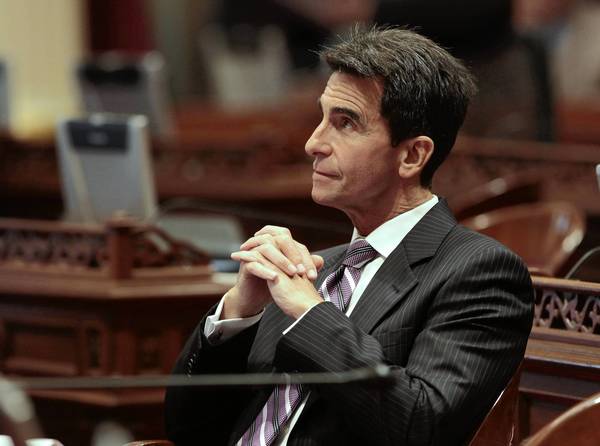SACRAMENTO — Gov. Jerry Brown has pointed to reams of documents to make the case in court and on the stump that California's prison crisis is over, and inmates are receiving good care.
But there is at least one document the administration wanted to hide.
New court filings reveal that the state suppressed a report from its own consultant warning that California's prison suicide-watch practices encouraged inmate deaths.
Lindsay Hayes, a national expert on suicide prevention in prisons, told corrections officials in 2011 that the state's system of holding suicidal inmates for days in dim, dirty, airless cells with unsanitized mattresses on the floor was compounding the risk that they would take their own lives.
His report described in detail inmates being divested of their clothes and possessions and robed in a "safety smock." Hayes concluded that such conditions encouraged prisoners to declare they were no longer suicidal just to escape the holding cells. Many of them took their own lives soon after.
The state asked Hayes to create a short version of his report that omitted his damaging findings, to give to a court monitor and lawyers for prisoners, the court documents show. Hayes complied, but when inmate attorneys obtained a complete copy, the state asked a U.S. District Court to order it destroyed. The judge refused.
The report says the state's handling of suicidal inmates is "seemingly punitive" and "anti-therapeutic." Hayes noted that guards, not mental health workers, dictate many of the conditions of suicide watches, such as whether to allow daily showers. Hayes alleged prison workers sometimes falsified watch logs showing how frequently those inmates were checked.
Hayes found that in 25 of the cases he reviewed, seven prisoners had killed themselves within hours or days of being released from suicide watch. He found lapses in care — lengthy delays in checking on the prisoners, failure to attempt CPR — in 68% of the cases he studied. Hayes did give the state high marks for compiling exhaustive reports after an inmate's death.
Contract records show that corrections officials recruited Hayes, a former consultant for inmate plaintiffs, to begin in 2010 a three-year project on suicide prevention, demonstrating the state's resolve to improve inmate mental health care.
His first report was filed in August 2011. Hayes said in a deposition that none of the follow-up reports and consultations called for in his contract occurred.
"When your report landed, it was not roundly applauded and in fact was buried," Robert Canning, a prison official overseeing Hayes' work, wrote in a June 2012 email to the consultant. There were 32 prison suicides in California in 2012, above the national average.
Other new filings show that the staffing shortage at one prison psychiatric hospital is so critical the psychiatric staff has declared they have been working since Jan. 23 "under protest."
The doctors in Salinas Valley State Prison's psychiatric program, run by the Department of State Hospitals, say they routinely juggle caseloads of up to 60 patients a day, and in some instances have been assigned wards containing as many as 120 patients a day.
"While not hiring psychiatrists may help the budget, it just drives more to leave, and the conditions just get even worse for those of us still here — and more importantly, for our patients," one of the psychiatrists told The Times, asking that he not be named for fear of retribution.
The Department of State Hospitals said Wednesday that it recently hired additional psychiatrists, with two starting work next week.
The department's acting director, Cliff Allenby, met with the prison hospital staff Wednesday "to reassure them their concerns have been and are being addressed," said spokesman David O'Brien. "There is currently no anticipated staffing crisis at DSH-Salinas Valley."
Brown has been arguing in federal court that California's prison psychiatric care no longer violates a constitutional prohibition against cruel and unusual punishment and should be freed from oversight. In a round of speeches in January, he cited testimony from state-paid experts that inmates receive timely and responsive mental health care.
paige.stjohn@latimes.com
